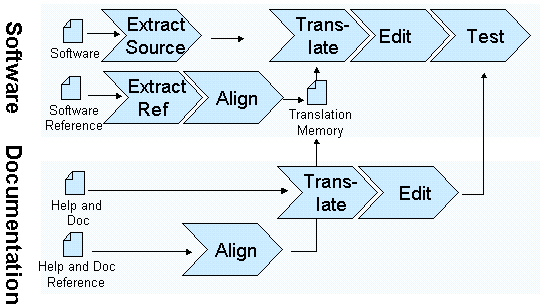Localization ProcessThis article has been updated and moved to a new location. Localization is the process of adapting your product for use in a foreign market. Successful localization yields a high quality native tongue translation and retains the functionality of the product. Localization must also consider how various cultural conventions in the target country require implementing source code changes. UnderestimationCan you imagine the damage to your product and brand image of a bad translation? Consider the following example translation of a text about the Model-View-Controller pattern:
Another dimension of language is relevant in countries such as Germany and Japan where the social status of the client has to be addressed and inappropriate translations might sound for example like:
Instead of:
Critical ResourcesAnother common mistake is to underestimate the financial resources and the management attention necessary to pursue a successful localization project. Localization is expensive because it involves the manual work of highly paid professionals. In addition, these professionals are distributed across the globe because only native speakers can deliver reasonable language quality. The high cost of localization requires a series of optimization measures such as the preservation of translations from the last software release and the avoidance of repeated text fragments. Also, a translator-friendly presentation of your localizable items will save substantial localization cost, at the prices of an increased software development effort on the client side. The Localization ProcessThe Figure below shows a brief overview over the linguistic processes that take place in a typical software localization project.
Basically there are four inputs to this process:
The translation process takes as a base the translation of the last software release and integrates this translation into the translation memory. This way only new or changed items need to be translated, saving time and preserving a consistent terminology. A project is usually divided in four phases: 1. Preparation Tasks:
2. Linguistic and Translation Tasks:
3. Engineering Tasks:
4. Testing Tasks:
|

